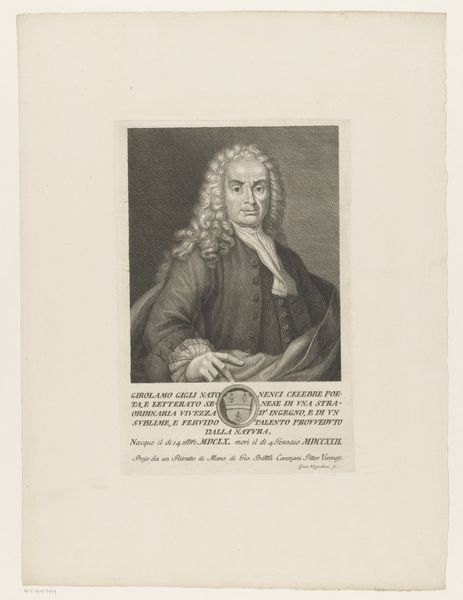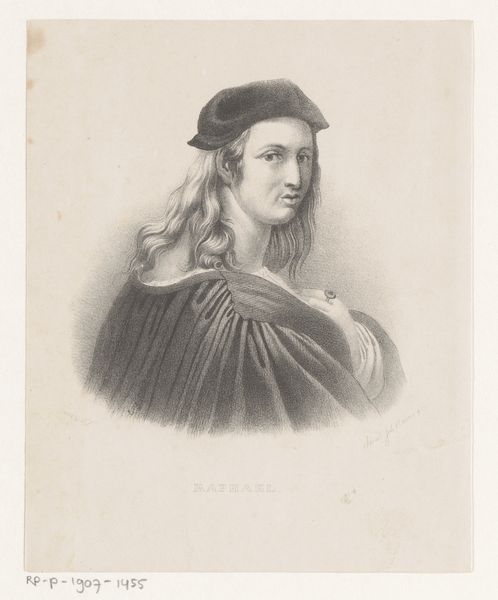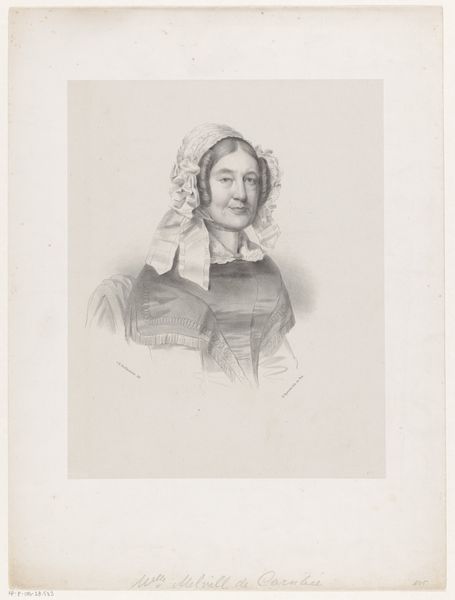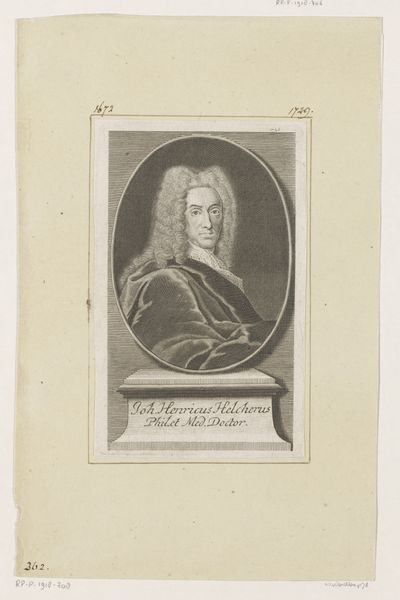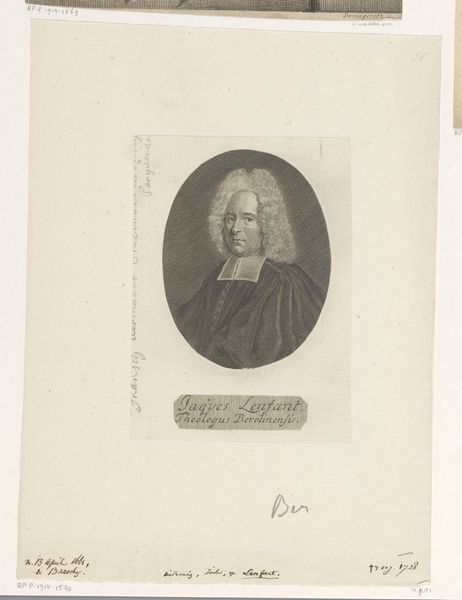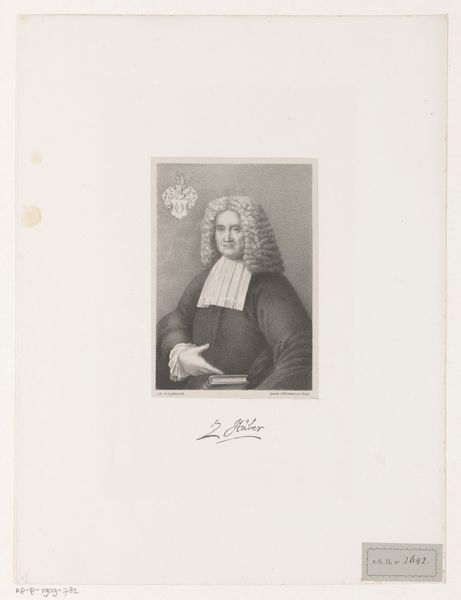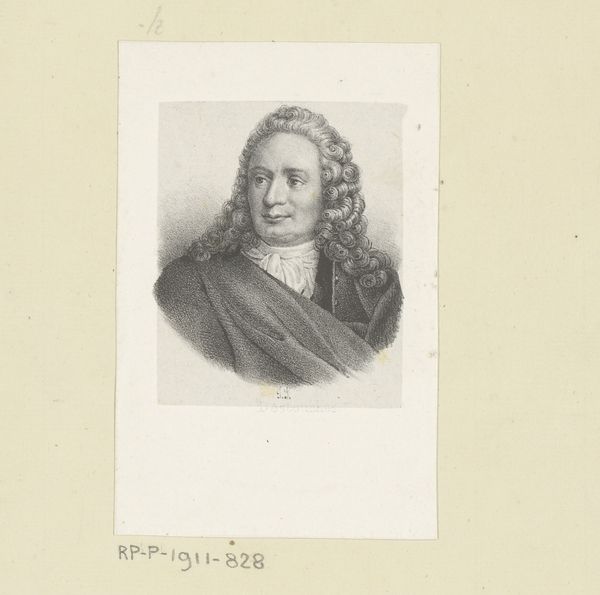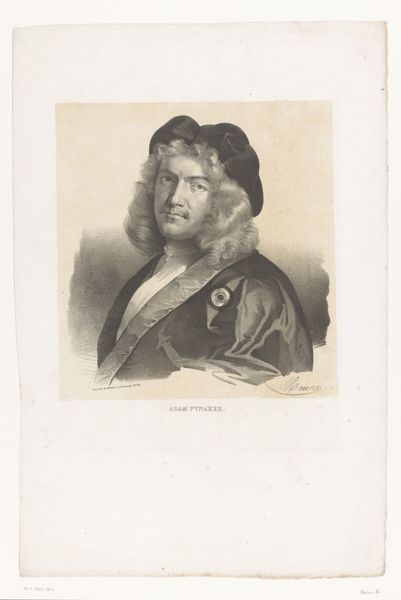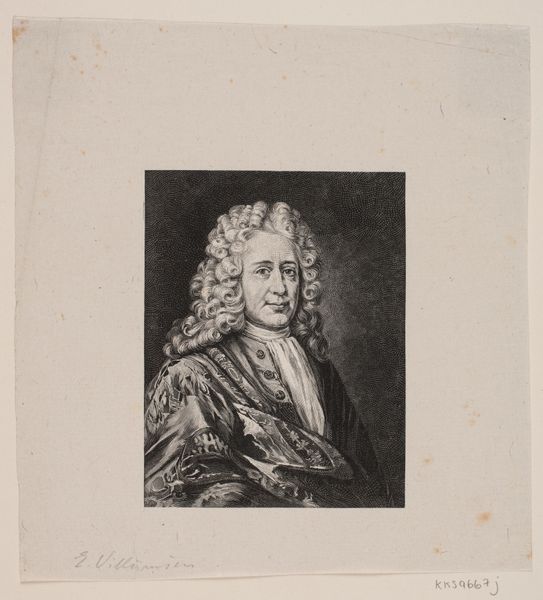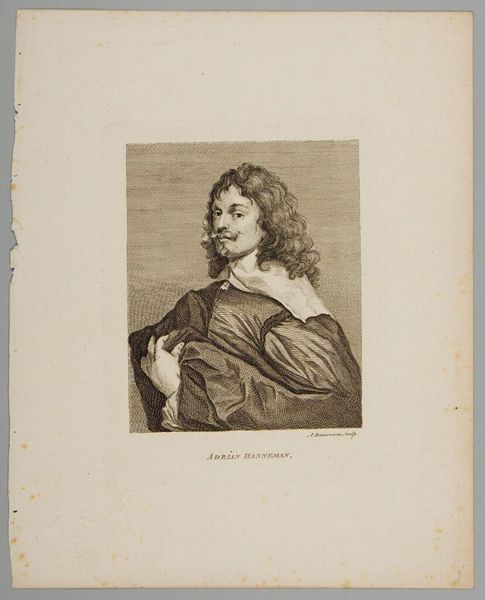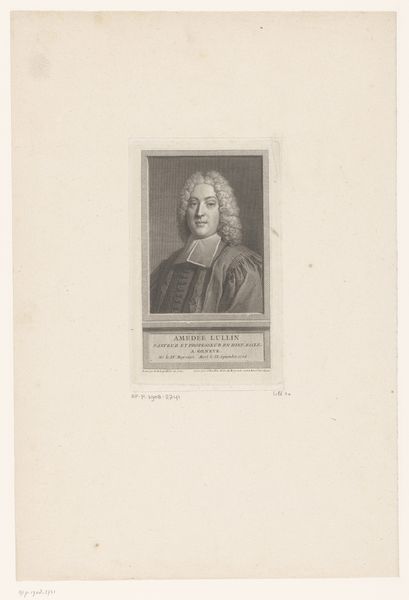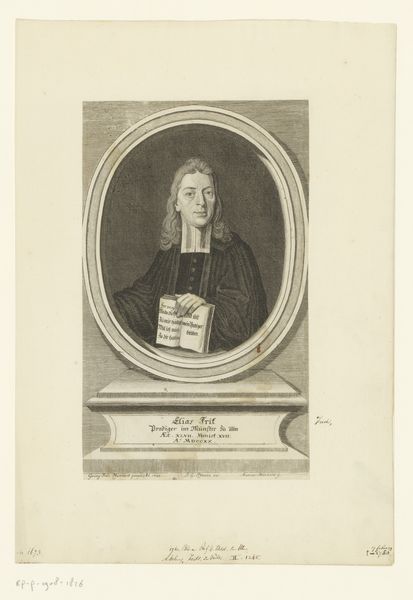
Dimensions: height 234 mm, width 186 mm
Copyright: Rijks Museum: Open Domain
Editor: This is "Zittende jongeman," or "Seated Young Man," made sometime between 1820 and 1884 by Carl August Deis. It’s a print made from an engraving, and the fine lines almost give it the appearance of a pencil drawing. I’m really drawn to the soft, romantic feel of it, especially the way the light falls. What stands out to you about this piece? Curator: What immediately grabs me is the material process itself. This isn't just an image; it’s an artifact resulting from labor. Consider the engraver: their skill, their tools. Each line meticulously carved, transferred to paper. Can we truly separate the "art" from the craft that birthed it? What do you make of the velvety appearance of the young man's clothes? Editor: I hadn’t thought of the craft so much. The velvet looks so real. Is that intentional, do you think, to make the print appear as luxury item? Curator: Absolutely. Look closer: it's all illusion achieved through the manipulation of material. The artist's hand mimics texture, playing with our perceptions of value and labor. How does this process of reproduction and distribution, turning art into a commodity, affect its cultural meaning? Editor: So, you're suggesting the print's value isn't just aesthetic, but also resides in understanding the economic forces at play. The material and means of its production tells its own story. Curator: Precisely! And stories about class and capital always surround artworks. We have to see the work as something that it _is_, ink on paper, and something it _does_ economically. Editor: I’m starting to see how considering the materiality and production transforms how we appreciate it. Thanks! Curator: My pleasure! Looking closely is transformative.
Comments
No comments
Be the first to comment and join the conversation on the ultimate creative platform.
